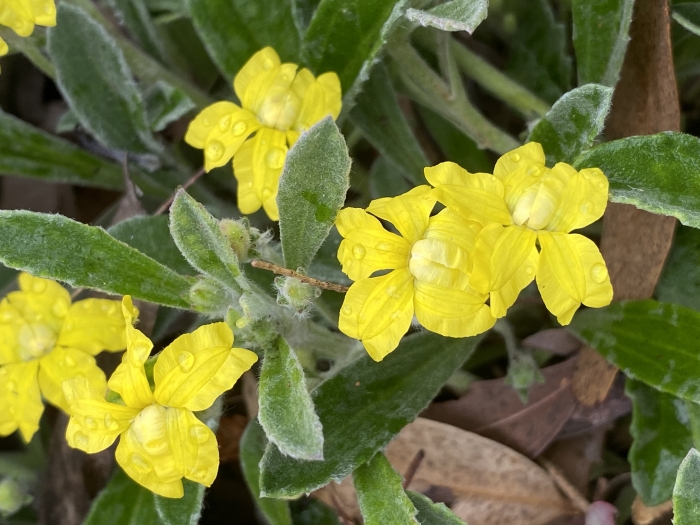Silver Goodenia
(Goodenia affinis)
Silver Goodenia (Goodenia affinis)
/
/

Allthingsnative
CC BY-SA 4.0
Image By:
Allthingsnative
Recorded By:
Copyright:
CC BY-SA 4.0
Copyright Notice:
Photo by: Allthingsnative | License Type: CC BY-SA 4.0 | License URL: https://creativecommons.org/licenses/by-sa/4.0 | Uploader: Allthingsnative | Publisher: Wikimedia Commons | Title: Goodenia_affinis_flowers_01.jpg | Notes: ==Summary== {{Information |Description=Ghost plant (''[[:en:Graptopetalum paraguayense|]]'') [[:en:Buffalo and Erie County Botanical Gardens|]]. |Source=own work |Date=2008-01-01 |Author=[[User:Davepape|Dave Pape]] |Permission=PD-user |other_versio










Estimated Native Range
Summary
Goodenia affinis, commonly known as Silver Goodenia, is a perennial herb endemic to the sandy soils and granite outcrops in the kwongan heathlands and woodlands of southwest Western Australia. It typically forms a low mound up to 200 mm (7.9 in) high, with oblong to egg-shaped leaves mostly clustered at the base. The plant features racemes of bright yellow flowers with linear bracteoles at the base, which bloom profusely from July to December, adding vibrant color to the garden. The flowers are followed by oblong fruit. Silver Goodenia is a hardy plant that can tolerate drought and poor soils, making it an excellent choice for water-wise gardens and native plantings.
Silver Goodenia is valued for its long flowering season and its ability to attract pollinators such as bees. It is suitable for rockeries, borders, and as a ground cover in sunny to partly shaded areas. This plant thrives with minimal care, requiring only low amounts of water once established, and it prefers well-drained soils, whether sandy or loamy. It is not commonly affected by diseases or pests, but it can be susceptible to root rot in poorly drained soils. There are no widely recognized cultivars of this species, but its natural form is well-suited to cultivation in Mediterranean climates. Gardeners should be aware that it may self-seed and spread if conditions are favorable, but it is not generally considered invasive.CC BY-SA 4.0
Silver Goodenia is valued for its long flowering season and its ability to attract pollinators such as bees. It is suitable for rockeries, borders, and as a ground cover in sunny to partly shaded areas. This plant thrives with minimal care, requiring only low amounts of water once established, and it prefers well-drained soils, whether sandy or loamy. It is not commonly affected by diseases or pests, but it can be susceptible to root rot in poorly drained soils. There are no widely recognized cultivars of this species, but its natural form is well-suited to cultivation in Mediterranean climates. Gardeners should be aware that it may self-seed and spread if conditions are favorable, but it is not generally considered invasive.CC BY-SA 4.0
Plant Description
- Plant Type: Herb
- Height: 0.3-0.7 feet
- Width: 0.5-2 feet
- Growth Rate: Moderate
- Flower Color: Yellow
- Flowering Season: Winter, Spring, Summer
- Leaf Retention: Deciduous
Growth Requirements
- Sun: Full Sun, Part Shade
- Water: Low
- Drainage: Medium, Fast
Common Uses
Drought Tolerant, Low Maintenance, Rock Garden
Natural Habitat
Kwongan heathlands and woodlands of southwest Western Australia
Other Names
Common Names:
Scientific Names: , Goodenia affinis, Goodenia geniculata var. eriophylla, Scaevola geniculata,
GBIF Accepted Name: Goodenia affinis de Vriese